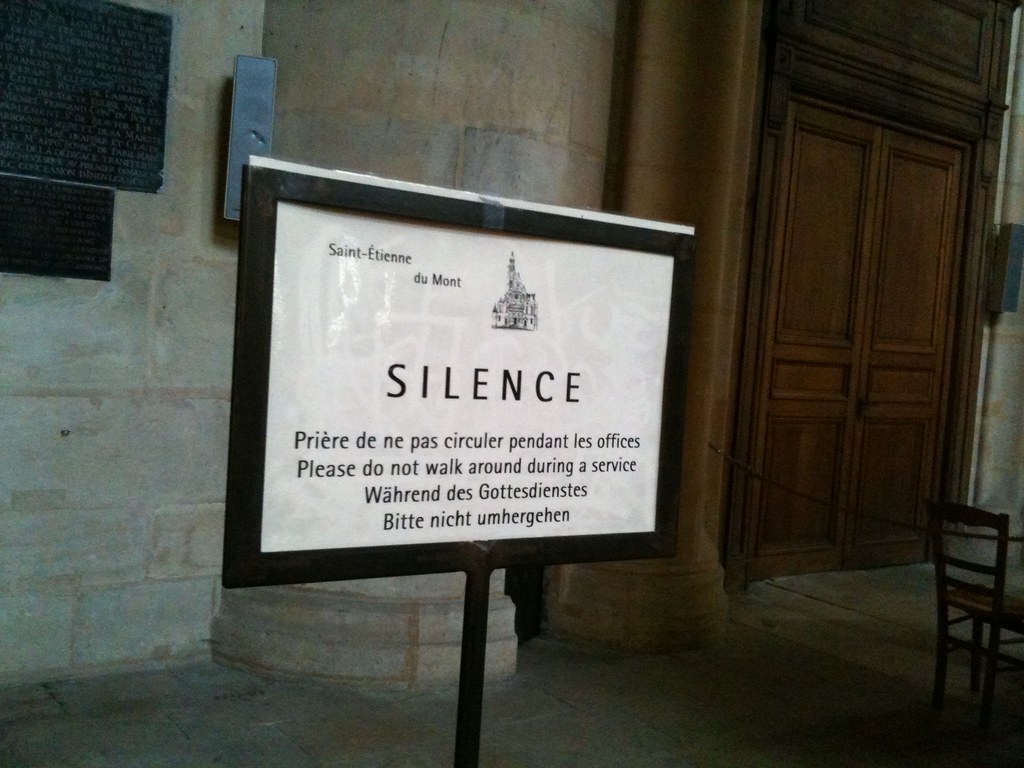Silence and the Use of Force in International Law
Editor's Note: This piece is crossposted on Lawfare and EJIL:Talk!
States frequently take actions and make statements that implicate international law. But because they do not—and, indeed, could not—express a view on each such act or statement by all other states at all times, silence seems to be the norm, rather than the exception, in international relations.

Published by The Lawfare Institute
in Cooperation With

Editor's Note: This piece is crossposted on Lawfare and EJIL:Talk!
States frequently take actions and make statements that implicate international law. But because they do not—and, indeed, could not—express a view on each such act or statement by all other states at all times, silence seems to be the norm, rather than the exception, in international relations.
When states and other international actors do not express their views on a particular incident, issue or statement that implicates international law, what is the legal significance, if any, of their silence? Does it denote acquiescence or quiet protest? Might it not have legal significance at all? Who makes this determination? Who benefits, and who loses, from a finding that a particular silence does or does not yield legal consequences?
Over the years, several scholars—despite some calls for caution—have invoked the silence of states and other international actors as proof of support for particular legal views. This practice has been noticeable and increasingly frequent in jus ad bellum—the field of international law governing the threat or use of force in international relations. For example, writings on the following military actions (among others) invoke silence as having some type of legal significance:
- The military raid in 1976 by Israel in Entebbe, Uganda
- The military intervention in 1979 by Tanzania in Uganda
- The “no-fly zones” over Iraq imposed after the U.N. Security Council adopted resolution 687 in 1991
- The airstrikes in 1998 by the United States against al-Qaeda in Afghanistan
- The military operations in 1999 and 2007–2008 by Turkey against the Partiya Karkerên Kurdistanê (PKK) in Iraq
- The military intervention beginning in 2001 by the U.S. in Afghanistan
- The military operations in 2002 and 2007 by Russia against Chechen rebels in Georgia
- The military operations in 2006 by Ethiopian armed forces against the “Islamic Courts” that allegedly had been conducting cross-border attacks from Somalia
- The incursion in March 2008 by Colombia against a Fuerzas Armadas Revolucionarias de Colombia (FARC) camp inside Ecuador’s border
- The incursion in 2011 by Kenya into Somalia in response to alleged cross-border attacks by al-Shabaab
- The military operations beginning in 2014 by an international coalition against the self-described Islamic State of Iraq and Syria (ISIS) in Syria
Where scholars in this field invoke silence as legally significant, those invocations are more often than not submitted in favor of wider claims to resort to force.
Of course, academic writings are by no means determinative in discerning what a legal rule is, let alone how it should be interpreted or applied. Nonetheless, legal scholarship often informs debates in all fields of law, and international law is no exception. Moreover, reliance on scholarship—including by government lawyers, international organizations and courts—may increase where the identification, interpretation or application of the law is subject to greater debate. And several key questions of contemporary jus ad bellum are in fact subject to extensive and often heated contestation.
In a new paper by the Harvard Law School Program on International Law and Armed Conflict (HLS PILAC) titled “Quantum of Silence: Inaction and Jus ad Bellum,” we examine the actual and potential roles of silence in the identification and the development of international law, with a particular focus on jus ad bellum. By “silence,” we mean a lack of a publicly discernible response either to conduct reflective of a legal position or to the explicit communication of a legal position. We argue, in a nutshell, that there is no quantum of silence that has clear doctrinal force. Instead, only certain forms of what we called “qualified silence”—whether of states or of the Security Council—may be capable of contributing to legal effects in this field. Those forms of qualified silence ought not to be lightly presumed.
We begin by considering the potential relevance of silence in the operation of some general principles of law, in the interpretation of treaties, and in the formation and identification of customary international law. This potential relevance and its consequences are of particular importance in relation to jus ad bellum, where the stakes for invoking silence are immensely high. That is not only because of the obvious importance of the subject matter itself but also because of certain jurisprudential structures of this legal field. Jus ad bellum treaty law is relatively sparse and subject to much debate. Customary international law on the use of force is often treated, in both theory and practice, as a key means to help resolve legal disputes, fill-in perceived gaps in the law and further develop doctrine. Yet whether a customary norm has in fact emerged, what its relationship is with the U.N. Charter and what its precise contours are—all make for their own sets of controversies. Furthermore, as the primary institution entrusted with safeguarding international peace and security, the U.N. Security Council plays a tripartite role of (quasi-)legislator, adjudicator and enforcer in matters pertaining to use of force. A lack of response by the council itself, as well as states’ lack of responses in relation to relevant council conduct, could introduce additional layers of silence that may have legal significance.
Within this jurisprudential structure, the reliance on silence—whether expressly acknowledged or not, and whether so intended or not—ends up playing a role in the identification, formation and modification of international law governing the resort to force.
We complement our analysis with an annex that offers the most comprehensive catalogue to date of communications made by U.N. member states to the Security Council of measures taken in purported exercise of the right of self-defense under Article 51 of the U.N. Charter. This HLS PILAC catalogue documents more than 400 such communications made since the founding of the U.N. in late October 1945 through 2018.
These communications are instances of actions and/or statements that implicate jus ad bellum, which in turn could be subject to explicit positive, negative or neutral responses from other states or the Security Council. Notably, however, U.N. member states are apparently not made aware of such statements on the use of force as a matter of routine practice. This means that, at least in some instances, states might fail to comment on or otherwise react to other states’ positions on the use of force—not as a deliberate choice but for lack of awareness. Reliance on silence in such cases obviously rests on even shakier grounds.
Given the stakes, the fact that states are not routinely and contemporaneously made aware of self-defense communications made to the Security Council under Article 51 is, in our view, a significant concern that ought to be addressed as a matter of priority. That issue forms part of the backdrop for a proposal that is currently being debated in the General Assembly-established Special Committee on the Charter of the United Nations and on the Strengthening of the Role of the Organization.
Finally, whatever the normative or jurisprudential merits of reliance on silence in argumentation over international law might be, states and other international actors that are concerned about existing jus ad bellum—or about how that law may be developing—may wish to more strategically and systematically consider the contexts in which they speak out and those in which they remain silent.







